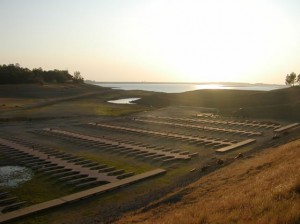There are a small number of marina assignments that have the word “tough” all over. Whether it is man-made or through an Act of God, a marina that has gone dry certainly deserves to be put in this category. Although few marinas have this problem, those owners and lenders that have them have a very difficult decision. Some of the old rules just don’t apply anymore.
The Journey is in the Discovery, Young Grasshopper
 Having appraised marinas that have subsequently gone dry, tackling the problem requires the detective skills of The Dark Knight. It’s hard to know what you’re going to find when you start investigating the marinas located along a dry lake. Most are out of business and those that are not are waiting to see if the situation will turn around. Don’t expect a lot of cooperation on getting insight, although you might find the occasional owner who will give you all the time in the world to complain… if you’re lucky.
Having appraised marinas that have subsequently gone dry, tackling the problem requires the detective skills of The Dark Knight. It’s hard to know what you’re going to find when you start investigating the marinas located along a dry lake. Most are out of business and those that are not are waiting to see if the situation will turn around. Don’t expect a lot of cooperation on getting insight, although you might find the occasional owner who will give you all the time in the world to complain… if you’re lucky.
When Will the Water Return?
This is one of the two hardest questions you will need to answer. Contrary to popular opinion, the amount of rain does not always translate into a stabilized higher pool level. Think about who owns the water. If it is a lake where the water can be drawn down for drinking or crops (as in Lake Lanier in Georgia), that water can be diverted to other uses. If there is a major city nearby, drinking water will always take precedence over a marina. So in this case you need not just more water… you need lots more water.
Now begins the research stage. You’ll need to go above and beyond the call of duty here. Your best sources are government agencies that have published data on changes in rain patterns and other climactic shifts. It may turn out that a region is slowly going dry… if so, that’s one very important piece of the puzzle. Another piece can be found in local newspapers. What is government’s attitude toward diverting water? What is the U.S. Army Corps of Engineers doing to help solve the situation? Do they have any plans in place that would increase the amount of pooling done at a lake? Is anyone doing anything? Based on your research, if you find that there is little or no government effort toward fixing the situation, you’ll probably want to adopt a more pessimistic outlook. That’s what a marina owner would feel and therefore you’re accurately modeling the market, if this is indeed the case.
How Much Stigma Is There?
Boaters who know the lake and the marina will have long since moved on. Let’s face facts: getting them back will be really, really hard… almost impossible, I’d say. Can we lure boaters away from other lakes? That depends on two things: what rates and service prices the marina sets and what percentage of the market will consider the lake permanently stigmatized.
The only way to determine what rates and service price need to be set to capture market share from other marinas and to determine if enough boaters can be captured to make the marina return to profitability is market research. Traditional appraisal techniques don’t help us here. You won’t be able to get a list of boaters from a competitive marina – what marina owner would give you that? The only option is to do an in-person survey of enough people that the results are credible. This takes time, of course, but we’ll explore how to use this information in the next part of this series.
USPAP
What makes this hard for the appraiser is we have the Uniform Standards of Professional Appraisal Practice to deal with. To determine market value and marketing time, we need to have support for our assumptions. That support can only come from market research like the above. This is way beyond typical appraisal assignments, yet it is absolutely necessary to do to produce a “credible” number (the operative term for all appraisals per USPAP). As I’ll discuss in the weighted market value discussion in Part 2, this can be the difference between a correct and incorrect highest and best use.
Conclusion
You won’t be able to predict when or how much the lake will fill up again, but what you can do is take it as far as a marina owner or buyer would. Think if it like early education. You’re not trying to get a percentage score or a letter score – simply pass fail… or in this case possible or impossible. Better yet, most probable, least probable and optimistic. Sometimes you have such an atypical property that you need to think outside the box and just solve the user’s problem, even if it means going beyond providing a single, pinpoint market value estimate.
In Part 2, I’ll explore the application of the income approach to a dry lake marina.

